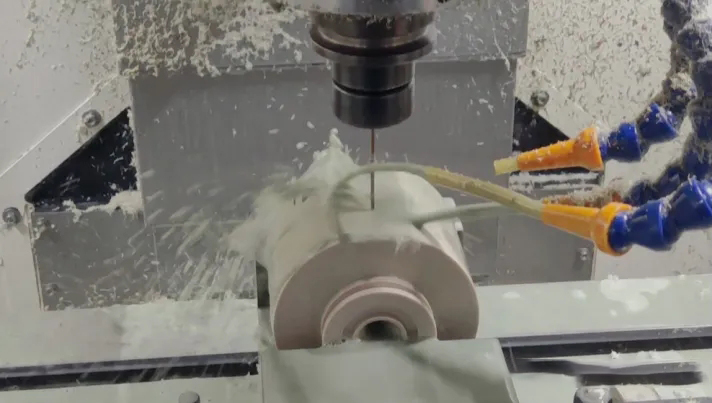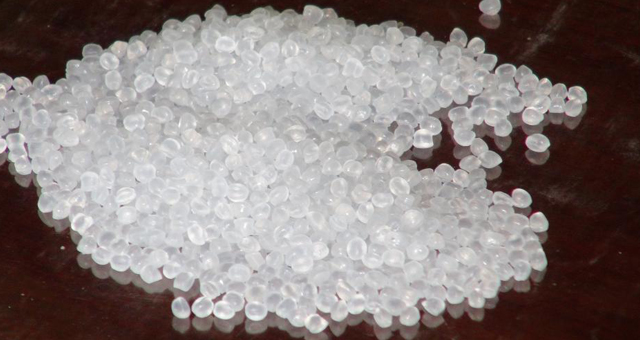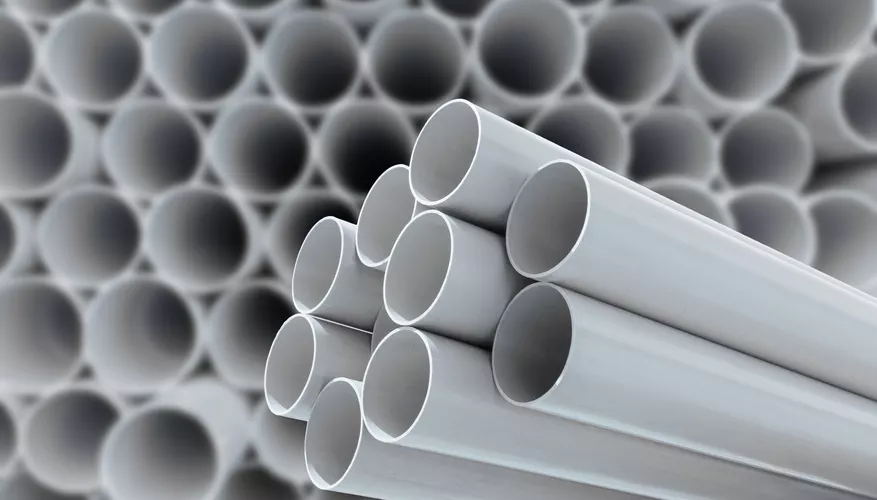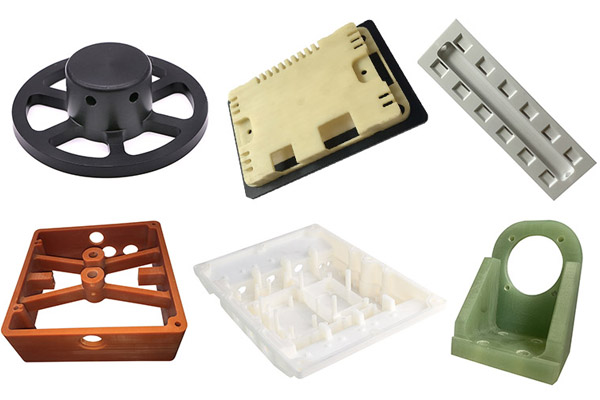15 years one-stop China custom CNC machining parts factory
 812 |
Published by VMT at Aug 08 2023
812 |
Published by VMT at Aug 08 2023
Polyethylene (PE) is a widely used multifunctional polymer that has revolutionized various industries and everyday products. It is a synthetic material belonging to the thermoplastic family that is malleable and adaptable. The excellent properties and applications of PE make it an indispensable part of modern life.

Learn about Polyethylene (PE)
Polyethylene is composed of simple ethylene monomer units that are chemically linked to form long chain structures. This molecular arrangement gives PE its unique properties and behaviour. It is classified into different types according to its density and molecular structure, resulting in distinct variations with different properties.
The Production Process of Polyethylene (PE): From Monomers to Multifunctional Polymers
Polyethylene (PE) is produced through a fascinating process that involves converting the simple ethylene monomer into a versatile and widely used polymer. Let's take a step-by-step look at how PE is manufactured and how it is transformed into a material that plays a key role in various industries.
Step 1: Ethylene Production
PE's journey begins with the production of ethylene, a hydrocarbon gas. Ethylene is obtained through processes such as steam cracking, in which hydrocarbons such as natural gas or naphtha are heated at high temperatures to break down the molecules and produce ethylene monomer.
Step 2: Aggregation
At the heart of PE production is polymerization, in which ethylene monomers are chemically linked to form the characteristic long chains of polyethylene. There are various methods of polymerization, but the most common is the Ziegler-Natta catalyst method. In this process, a Ziegler-Natta catalyst (a combination of a transition metal compound and an organoaluminum compound) is used to initiate the polymerization reaction.
Step 3: Chain Growth and Molecular Weight Control
During polymerization, vinyl monomers are added to the growing polymer chain. The length of these chains determines the properties of the resulting PE. By adjusting factors such as temperature, pressure and catalyst composition, the process can be controlled to produce different types of PE, such as low-density polyethylene (LDPE) and high-density polyethylene (HDPE).
Step 4: Cool and solidify
After polymerization, the molten polymer is cooled and solidified. This can be done by methods such as water quenching or air cooling. The cooling process affects the crystallinity and final properties of the polymer.
Step 5: Granulation
The cured polymer is then typically chopped into small pellets for ease of handling, transport and processing. These pellets can be melted and shaped into various products during the manufacturing process.
Step Six: Product Manufacturing
PE pellets are now ready to be transformed into various products. Depending on the type of PE and desired product, pellets can be processed by extrusion, injection molding, blow molding, etc. These processes shape PE into its final form, whether it is a plastic bag, container, pipe or other product.
Significance of PE Production
The production of polyethylene is a critical process supporting industries worldwide. The ability to control the polymerization process and create various types of PE with different properties allows manufacturers to cater to different applications. From flexible packaging to rigid containers, the versatility of PE is justified by the complexity of its production process.
When you encounter products made of PE in your everyday life, remember the complex journey these materials have taken - from the humble ethylene molecule to the versatile polymers that contribute to modern life and innovation across industries.
Type of Polyethylene
There are many types of polyethylene, each with its own properties and applications:
Low Density Polyethylene (LDPE): LDPE has a branched structure, which gives it flexibility and low density. It is commonly used in products such as plastic bags, films and coatings due to its transparency and impact resistance.

High Density Polyethylene (HDPE): HDPE has a more linear structure with minimal branching, resulting in higher density and greater strength. It is used in products such as containers, pipes and packaging materials due to its durability and chemical resistance.

Linear Low Density Polyethylene (LLDPE): LLDPE is a modified form of LDPE that has a linear structure. It combines the flexibility and enhanced tensile strength of LDPE, making it suitable for applications such as stretch film and plastic bags.
Medium Density Polyethylene (MDPE): MDPE is between LDPE and HDPE with higher strength and flexibility. It is commonly used in gas pipes, fittings and containers.
Explore the Properties of Polyethylene (PE)
PE has a range of properties that make it a popular material in various industries:
Flexibility: The branched structure of LDPE gives it flexibility, making it suitable for products that need to be bent or deformed.
Strength: HDPE's linear structure imparts greater strength, making it suitable for applications requiring durability and load-carrying capacity.
Chemical Resistance: Both LDPE and HDPE are resistant to many chemicals, making them ideal for containers and pipes that transport liquids or chemicals.
Water Resistance: PE is naturally water resistant and therefore suitable for applications where moisture resistance is critical.
Recyclability: PE is widely recycled, contributing to sustainable practices and reducing environmental impact.
Polyethylene Application
The versatility and adaptability of polyethylene has led to its wide application in various industries:
Packaging: PE is the material of choice for packaging as it protects the contents from moisture, chemicals and physical influences. Plastic bags, films and containers are common examples.
Automotive: PE is used in automotive components such as fuel tanks, bumpers and cable insulation due to its lightweight and durable properties.
Construction industry: Pipes, pipe fittings and insulation materials made of PE are widely used in building water supply, drainage systems and insulation purposes.
Consumer Goods: From toys to household items, PE is used in a wide variety of consumer products due to its cost-effectiveness and ease of manufacture.
Medical Applications: PE's chemical resistance and compatibility with sterilization methods make it suitable for use in medical devices, packaging and containers.
Agriculture: Agricultural films, greenhouse covers and irrigation systems often use PE to promote crop growth and protection.
Industrial Applications: PE is used in industrial applications such as protective clothing, conveyor belts and industrial containers.

Make informed choices as a customer
As a customer, understanding the structure, properties and applications of PE enables you to make informed decisions based on your needs. Whether you are choosing a packaging material to protect your product, looking for durable toys for your kids, or promoting environmentally friendly practices through recycling, the versatility and utility of PE can meet a wide range of requirements.
By recognizing the different roles PE plays in our lives, you can confidently choose products that match your values, preferences and real needs. Polyethylene continues to shape modern life, and as a customer you can harness its benefits for a variety of purposes.
Frequently Asked Questions About Polyethylene (PE)
Polyethylene (PE) is a widely used multifunctional polymer that often raises questions for those interested in understanding its properties, applications and effects. Let's address some frequently asked questions for a comprehensive overview of this remarkable material.
1. What is polyethylene (PE)?
Polyethylene is a synthetic polymer composed of ethylene monomers. It is available in various forms such as low density polyethylene (LDPE) and high density polyethylene (HDPE), each with unique properties for different applications.
2. What are the main types of polyethylene?
The main types of PE include LDPE, HDPE, linear low-density polyethylene (LLDPE), and medium-density polyethylene (MDPE). These types vary in molecular structure, density and performance properties.
3. What are the main characteristics of PE?
PE has properties such as flexibility, strength, chemical resistance, water resistance and recyclability. Its properties vary depending on the type of PE and its application.
4. What are the applications of PE?
PE is used in packaging (bags, films, containers), automotive parts (fuel tanks, bumpers), construction materials (pipes, insulation), medical devices (containers, packaging), etc.
5. Can PE be recycled?
Yes, PE is recyclable. Many recycling programs accept PE products, contributing to sustainability and reducing environmental impact.
6. What are the advantages of using PE?
PE is cost-effective, versatile, lightweight, durable, and resistant to chemicals and moisture.
7. How is PE manufactured?
The production process of PE includes ethylene production, catalyst polymerization, chain growth control, cooling and solidification. The resulting polymer is converted into pellets for further processing.
8. Is PE safe for food packaging?
Yes, PE is commonly used in food packaging due to its non-toxic nature and resistance to moisture and chemicals.
9. Can PE be used in medical applications?
Yes, LDPE's compatibility with sterilization methods and chemical resistance make it suitable for use in medical devices, containers and packaging.
10. What is the impact of PE on the environment?
While polyethylene's recyclability contributes to sustainability, improper disposal can cause environmental concerns. Recycling and proper waste management are essential to minimize its impact.
In Summary
Polyethylene (PE) is a polymer that plays an integral role in every aspect of modern life. Its versatility, diverse applications, and impact on sustainability make it a subject of curiosity and inquiry. Understanding the fundamentals of private equity enables individuals to make informed choices and understand its importance in the industry and in everyday products.
The production of polyethylene (PE) is a complex process that begins with the extraction of ethylene and ends with the multifunctional polymer affecting numerous industries. Ethylene is first produced through processes such as steam cracking, and then the monomers are polymerized using catalysts such as Ziegler-Natta to initiate chain growth. The properties of the resulting polymers are determined by factors such as temperature, pressure and catalyst composition. After cooling and solidification, the polymer is converted into manageable particles for further processing. These pellets are the basis for the manufacture of various products through methods such as extrusion and injection molding.
The complex journey from ethylene molecule to final polymer demonstrates the ingenuity of chemical engineering and the impact polyethylene has on our everyday lives. When we encounter PE-based products in packaging, automotive parts, medical devices, etc., we should recognize the complexity of the production process that allows this versatile and indispensable material to be born.
